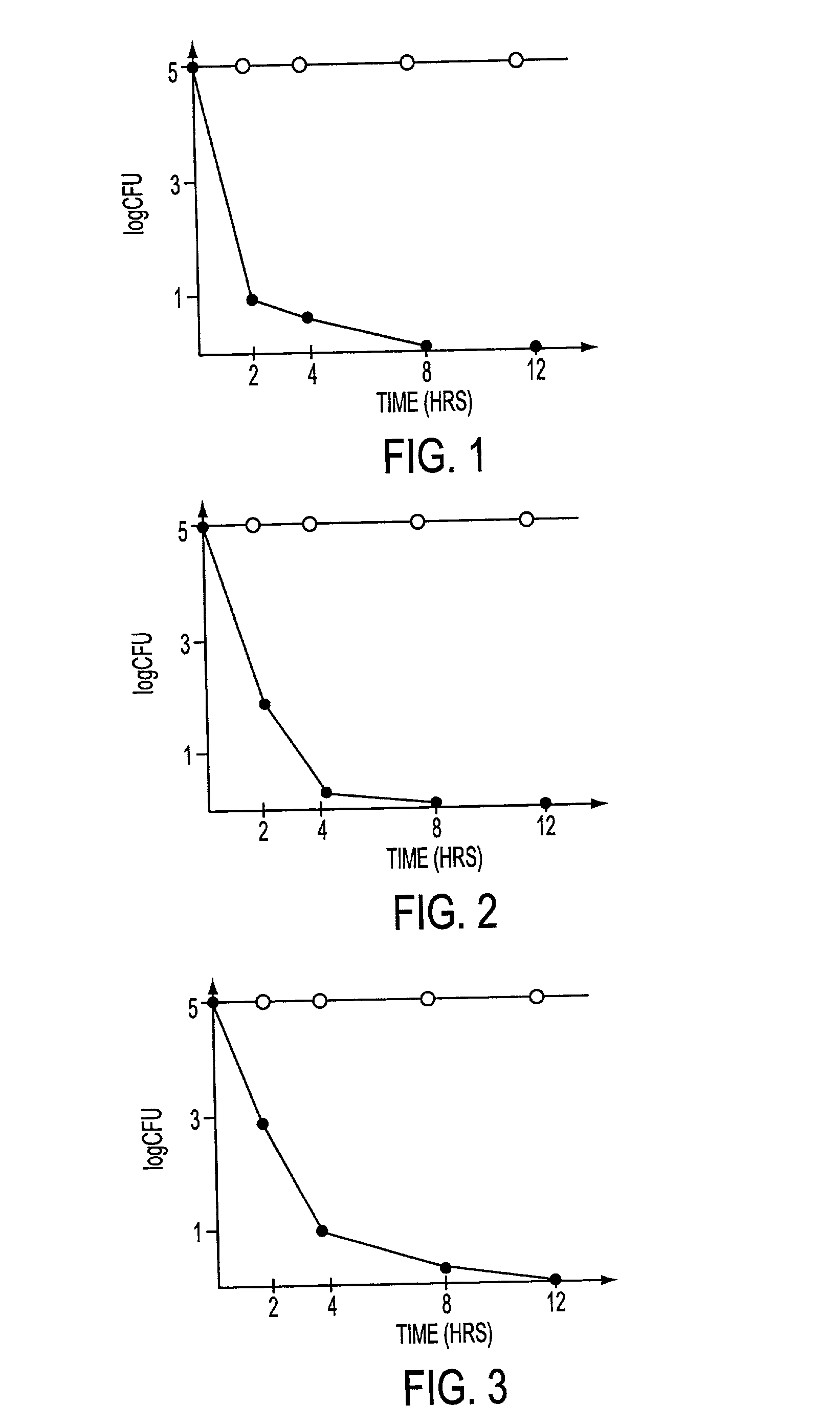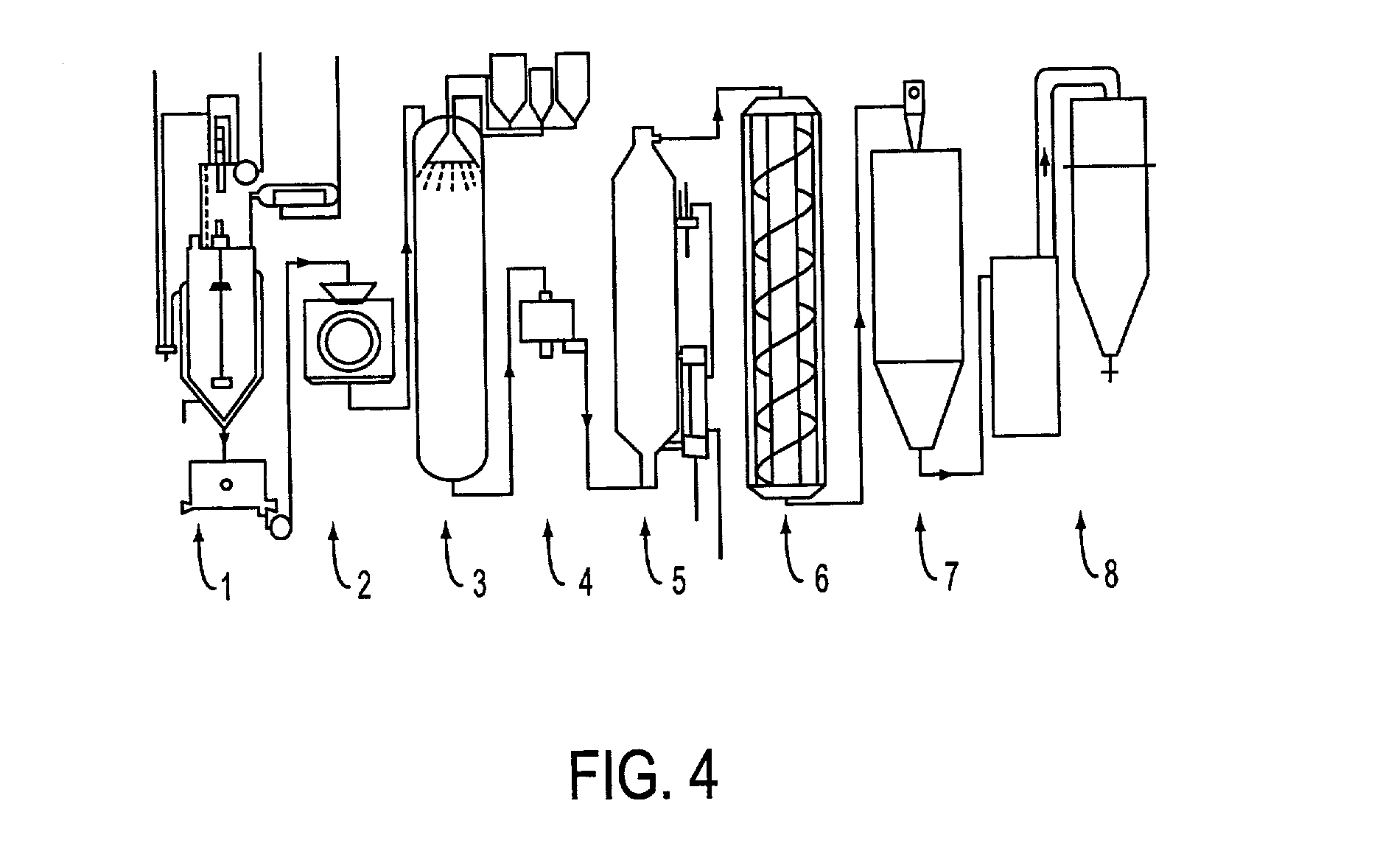Nanosilver-containing antibacterial and antifungal granules and methods for preparing and using the same
a technology of nanosilver and antibacterial granules, which is applied in the directions of plant/algae/fungi/lichens ingredients, biocide, unknown materials, etc., can solve the problems of limited use of silver ions in solution, inability to ensure contact between microbial cells and silver ions, and inability to acquire resistance to metals
- Summary
- Abstract
- Description
- Claims
- Application Information
AI Technical Summary
Benefits of technology
Problems solved by technology
Method used
Image
Examples
example 2
Antibacterial Effect of the Solution Containing the NAGs
[0064] The antibacterial effect of the NAGs in the solution was tested as follows:
[0065] A. Preparation of the NAGs solution
[0066] Five (5) g of the NAGs were suspended in 500 ml of water and stayed in the solution for 24 hrs to obtain an NAGs-containing solution.
[0067] B. Preparation of bacteria
[0068] M-H liquid and solid culture media were used for activation and culture of the bacteria. Staphylococcus aureus stock M120, Escherichia coli stock E109, and Pseudomonas aeruginosa stock PS208 were used for the testing. These stocks were provided by the Microbiology Teaching and Research Section at Henan Medical University.
[0069] The frozen stocks of bacteria were seeded onto solid culture media. Single colonies were picked and inoculated respectively in 2 ml liquid culture medium and cultured at 37.degree. C. for eight (8) hours. Then, the liquid culture medium was diluted at 1:1000 and stored in refrigerator (around 0.degree. C.)...
example 3
Time Course of Antibacterial Effects of the NAGs
[0074] A time course study of the antibacterial effects of the NAGs in a solution was conducted as follows:
[0075] A. Preparation of bacterial stocks
[0076] M-H liquid and solid culture media were used for activation and culture of the bacteria. Staphylococcus aureus stock M120, Escherichia coli stock E109, and Pseudomonas aeruginosa stock PS208 were provided by the Microbiology Teaching and Research Section at Henan Medical University. The stocks were cultured in an incubator at 37.degree. C. for 24 hours.
[0077] The frozen stocks of bacteria were seeded to a culture plate. Single colonies were chosen and inoculated in 2 ml liquid culture medium, respectively, where they were cultured at 37.degree. C. for eight (8) hours. Then, the liquid culture medium was diluted at 1:1000 and stored in the refrigerator (around 0.degree. C.) until ready for use. The solution contained about 10.sup.5 CFU / ml bacterial stock.
[0078] B. The effect of the NA...
example 4
Antibacterial Effect of the NAGs on Toothbrush
[0085] The antibacterial effect of the NAGs was tested on toothbrush as follows:
[0086] A. Preparation of bacteria
[0087] M-H liquid and solid culture media were used for activation and culture of the bacteria. Staphylococcus aureus stock M120 was provided by the Microbiology Teaching and Research Section at Henan Medical University. The stock was cultured in an incubator at 37.degree. C. for 24 hours.
[0088] The frozen stock of bacteria was seeded to a culture plate. A single colony was chosen and inoculated in 2 ml liquid culture medium, respectively, where the bacteria were cultured at 37.degree. C. for eight (8) hours. Then, the liquid culture medium was diluted at 1:1000 and stored in the refrigerator (around 0.degree. C.) until ready for use. The solution contained about 10.sup.5 CFU / ml bacterial stock.
[0089] B. Treatment of toothbrush
[0090] The bactericidal activity of the NAGs on toothbrush was tested by two (2) methods:
[0091] (1). ...
PUM
 Login to View More
Login to View More Abstract
Description
Claims
Application Information
 Login to View More
Login to View More - R&D
- Intellectual Property
- Life Sciences
- Materials
- Tech Scout
- Unparalleled Data Quality
- Higher Quality Content
- 60% Fewer Hallucinations
Browse by: Latest US Patents, China's latest patents, Technical Efficacy Thesaurus, Application Domain, Technology Topic, Popular Technical Reports.
© 2025 PatSnap. All rights reserved.Legal|Privacy policy|Modern Slavery Act Transparency Statement|Sitemap|About US| Contact US: help@patsnap.com



